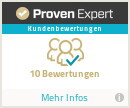The 2 Facets of UX Leadership: Balancing Team and Thought Leadership for Success
12. April 2023 2023-11-07 10:37The 2 Facets of UX Leadership: Balancing Team and Thought Leadership for Success

The 2 Facets of UX Leadership: Balancing Team and Thought Leadership for Success
As a UX leader, you are responsible for producing high-quality UX design work, managing a team, and serving as a representative of UX design to your organisation and beyond. Balancing these two crucial responsibilities can be challenging but essential for your success as a UX leader.
The two facets of UX leadership, team and thought leadership, require distinct skill sets and strategies. Team leadership involves guiding and motivating your team members and providing them with the resources and support they need to produce excellent work. In contrast, thought leadership requires you to educate your organisation and stakeholders about the importance of UX design and advocate for the needs of your users.
This article explores these two critical facets of UX leadership in more detail and provides practical tips on balancing both effectively. By mastering team and thought leadership, you can create a high-performing team, drive the adoption of UX design throughout your organisation, and advance your career as a UX leader.
In the following sections, we will delve into the essential skills and strategies you need to succeed as a team leader and thought leader in UX design. By the end of this article, you will better understand how to balance both responsibilities effectively, ultimately enhancing your effectiveness and impact as a UX leader.
Team Leadership: Fostering a Collaborative and Supportive Environment
As a team leader, your primary responsibility is not just about producing high-quality UX design work but also leading and developing your team members. Your team’s success depends on your ability to create a culture of trust and collaboration where everyone feels valued, heard, and supported.
Effective team leadership involves various skills, from communication and empathy to delegation and coaching. As a warm-hearted leader, you must inspire your team members to be their best selves, creating an environment that fosters creativity and innovation.
To excel in this facet of UX leadership, you must build a relationship with each team member, understanding their unique strengths, weaknesses, and goals. You must provide regular feedback and coaching, ensuring everyone has the resources and support they need to grow and succeed. And you need to create an environment that encourages experimentation and learning, where failure is seen as an opportunity for growth.
In the following list, I’ve outlined four critical aspects of team leadership that are essential to building a supportive and collaborative team and delivering user-centred UX design work:
- Hire and Develop: Hire the most dedicated designers with the best team fit and invest in their development. It is essential to provide your team members with the resources, tools, and support they need to succeed. This includes offering ongoing training, mentorship, and regular feedback. Hiring designers who share your values and work well with the team can create a collaborative and supportive environment that fosters growth and innovation. Encourage your team members to learn from each other and share their knowledge and expertise to improve the team’s overall performance.
- Empower: A warm-hearted leader empowers team members to own their work and make decisions independently. This builds trust, boosts morale, and leads to increased productivity. To empower your team, create a collaborative environment, encourage knowledge-sharing, and provide necessary resources and support. Giving up control and trusting your team members to do their job allows them to grow as designers and leaders. Recognise each member’s unique skills and perspectives and encourage them to learn from each other to improve overall team performance.
- Mentor: You must guide and support your team members, helping them develop their skills and grow as designers. This involves setting clear goals and expectations, providing constructive feedback, and creating opportunities for learning and development. Take the time to understand each team member’s strengths and areas for growth, and tailor your mentoring approach accordingly. Encourage open communication and create a safe space for team members to share ideas and ask questions. Investing in your team’s growth improves their skills and fosters a positive and productive work environment.
- Delegate: Effective delegation is a crucial aspect of team leadership. You need to assign tasks based on your team members’ strengths and weaknesses to ensure appropriate responsibility and ownership. Provide clear goals, expectations, deadlines, and resources, and check in on progress regularly. Delegating effectively empowers your team members to take ownership of their work and develop their skills.
Thought Leadership: Representing UX to the Company and Beyond
As a UX thought leader, your primary responsibility is to represent the topic of UX to your organisation and beyond. You must deeply understand UX design principles, best practices, and emerging trends to effectively communicate UX’s value. The role of a thought leader requires you to have a broad perspective and to be a visionary who can identify and communicate how UX design can help your organisation achieve its strategic goals.
Here are some tips on how to excel in this facet of UX leadership:
- Educate: One of the critical responsibilities of a UX thought leader is to educate your organisation and stakeholders about the importance of UX design and its impact on business success. This includes creating presentations, workshops, and other learning opportunities that help people understand the basics of UX design, its significance for the business, and its impact on the user experience. By providing education and training to your colleagues and stakeholders, you can develop a more UX-savvy culture within your organisation. (Pro tip: Encourage your team to take over the company’s training.)
- Evangelise: To be an effective UX thought leader, you must evangelise the importance of UX design to your organisation and stakeholders. Show them how UX can help to solve business problems, improve user satisfaction, and drive growth. Evangelising UX means advocating its benefits and creating a vision for how it can transform your organisation’s products and services. By being a champion for UX design, you can influence others to value and invest in it.
- Advocate: As a UX thought leader, you must advocate for the needs of your users and ensure that they are at the centre of all design decisions. This requires a deep understanding of user needs, behaviours, and motivations. You must communicate the value of user-centred design and help your colleagues and stakeholders empathise with your users. By advocating for your users, you can create more meaningful and impactful design solutions that meet their needs.
- Network: Networking with other UX leaders and professionals in the industry is essential for a UX thought leader. Attending conferences, meetups, and other events is an excellent way to learn from others, share your experiences, and build relationships. Networking can also help you stay up-to-date with the latest UX design trends, best practices, and emerging technologies. By building a network of UX professionals, you can create a community of practice supporting you in your role as a thought leader.
- Innovate: Pushing the boundaries of UX design and exploring new ideas and approaches is essential for a UX thought leader. You need to be a champion for innovation and experimentation within your organisation. This means encouraging your team members to take risks and try new things, even if they may not always succeed. By fostering a culture of innovation and experimentation, you can create breakthrough design solutions that differentiate your organisation from the competition.
Balancing the Two Facets
As a UX leader, balancing team and thought leadership is crucial for success. Here are some tips on how to balance both effectively:
- Prioritise: Prioritisation is one of the most essential aspects of balancing both team and thought leadership. Identify your team’s goals and your organisation’s needs and align your efforts accordingly. Prioritise the most important tasks and delegate responsibilities to your team members as needed.
- Communicate: Effective communication is vital to balancing team and thought leadership. Keep your team members and stakeholders informed about your efforts and progress, and ensure everyone is on the same page. Encourage feedback and be open to constructive criticism.
- Delegate: Delegating tasks to your team members is also essential. It helps distribute the workload and allows team members to take ownership and develop their skills. When delegating tasks, be clear about expectations and provide support and resources as needed.
- Plan Ahead: Planning ahead is essential for balancing team and thought leadership. Set realistic timelines, identify potential roadblocks, and plan for contingencies. This will help you stay on track and ensure you can meet your goals.
- Recognise the ebb and flow: It’s necessary to understand that there will be times when team leadership demands more attention and other times when thought leadership takes priority. For example, when launching a new product or feature, team leadership may require more time and focus on ensuring the design team is aligned and producing quality work. On the other hand, when developing a long-term UX strategy, thought leadership may be more critical to ensure that the organisation is moving in the right direction. Recognising this ebb and flow of team and thought leadership and being able to adapt your leadership style accordingly will help you balance the two facets effectively. Remember, it’s normal for the balance to shift over time, and being flexible is key to success.
- Learn and Grow: Finally, be willing to learn and grow as a UX leader. Seek feedback and growth opportunities, and be open to new ideas and approaches. Embrace a growth mindset and encourage your team members to do the same.
By effectively balancing team and thought leadership, you can create a strong, impactful UX team that delivers exceptional results and drives business success.
Conclusion
In conclusion, effective UX leadership requires a balance of team and thought leadership. By hiring and developing the most dedicated designers, empowering your team members, providing guidance and support through mentorship, delegating tasks effectively, educating and evangelising about the importance of UX design, advocating for the needs of users, networking with other UX leaders, and pushing the boundaries of innovation, you can create a high-performing team that delivers outstanding results.
Remember that there will be times when team leadership takes precedence and other times when thought leadership is the main focus. Balancing the two facets is a continuous process that requires ongoing assessment and adjustment.
As a UX leadership coach, I can help you navigate this process and develop the skills and strategies necessary to become a successful UX leader. Contact me today to learn more and take the next step in your career.
Together, we can build a future where UX design is at the forefront of business success and users’ needs are always kept in mind.
You can find the German translation of this article here: https://www.produktbezogen.de/ux-leadership-facetten/
Additional Ressources
Makri, S. (2023). Thought Leadership in UX. LinkedIn Pulse. https://www.linkedin.com/pulse/thought-leadership-ux-stella-makri/
Master Class (2022). Team Leadership: How to Be an Effective Team Leader https://www.masterclass.com/articles/team-leader







